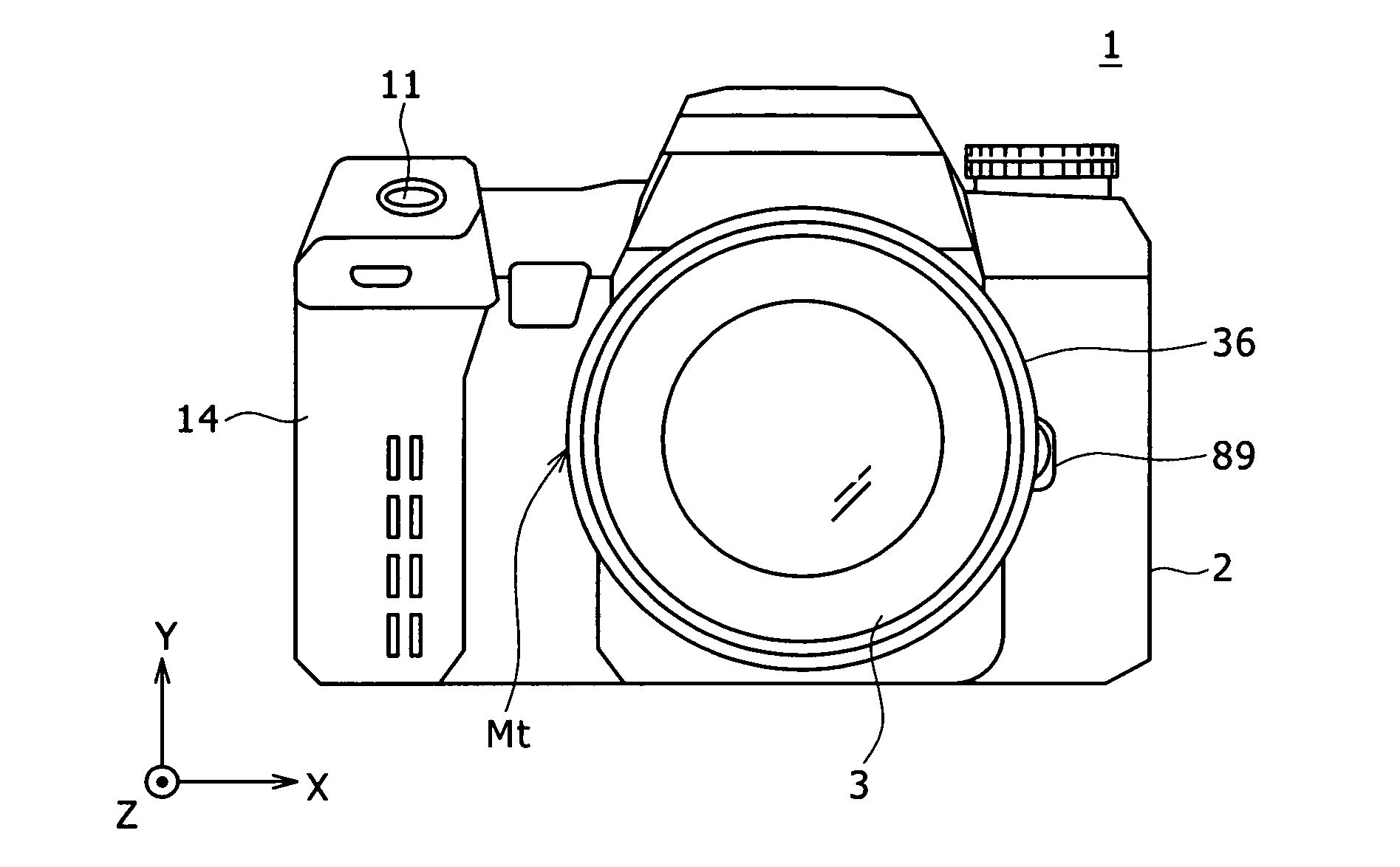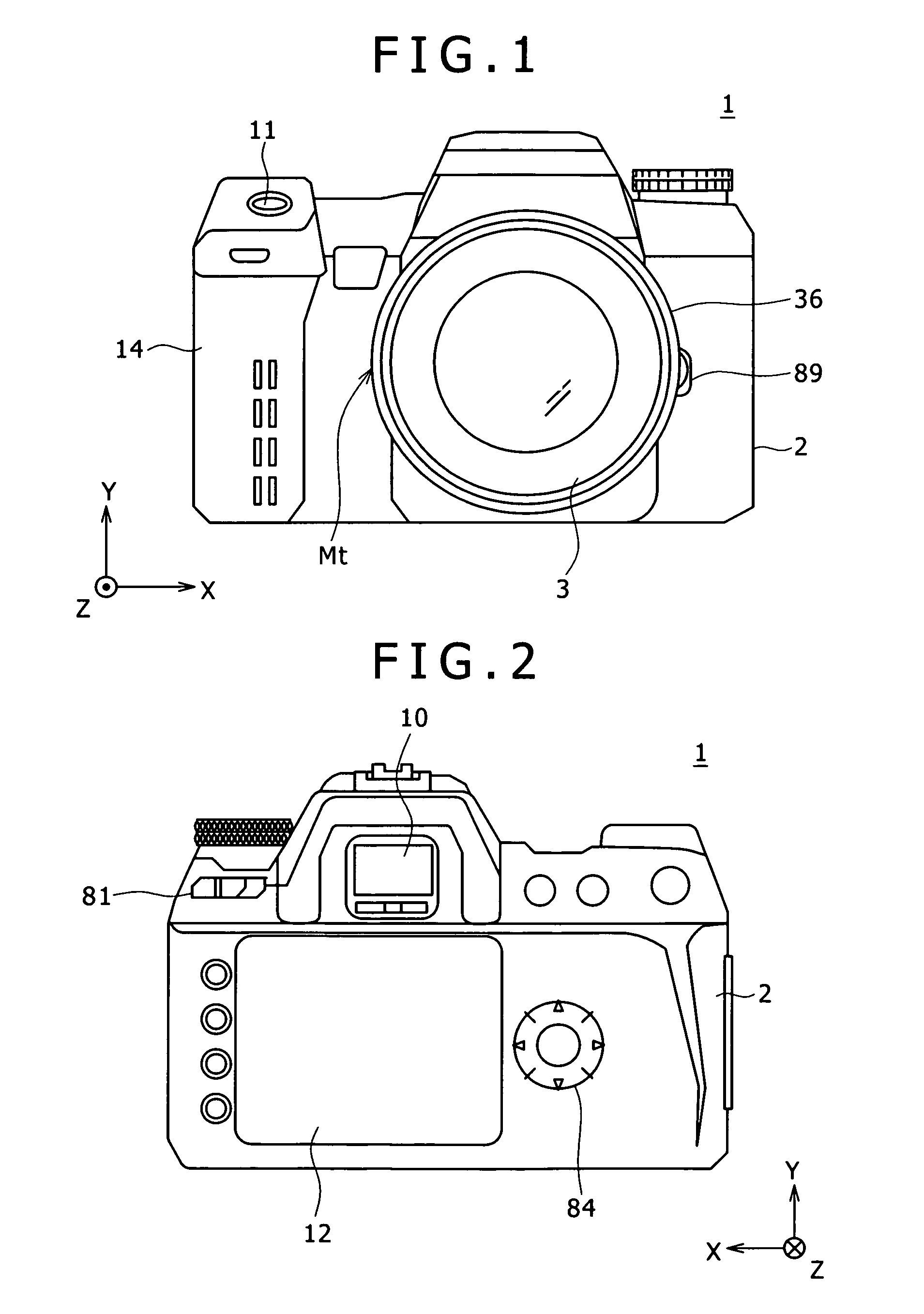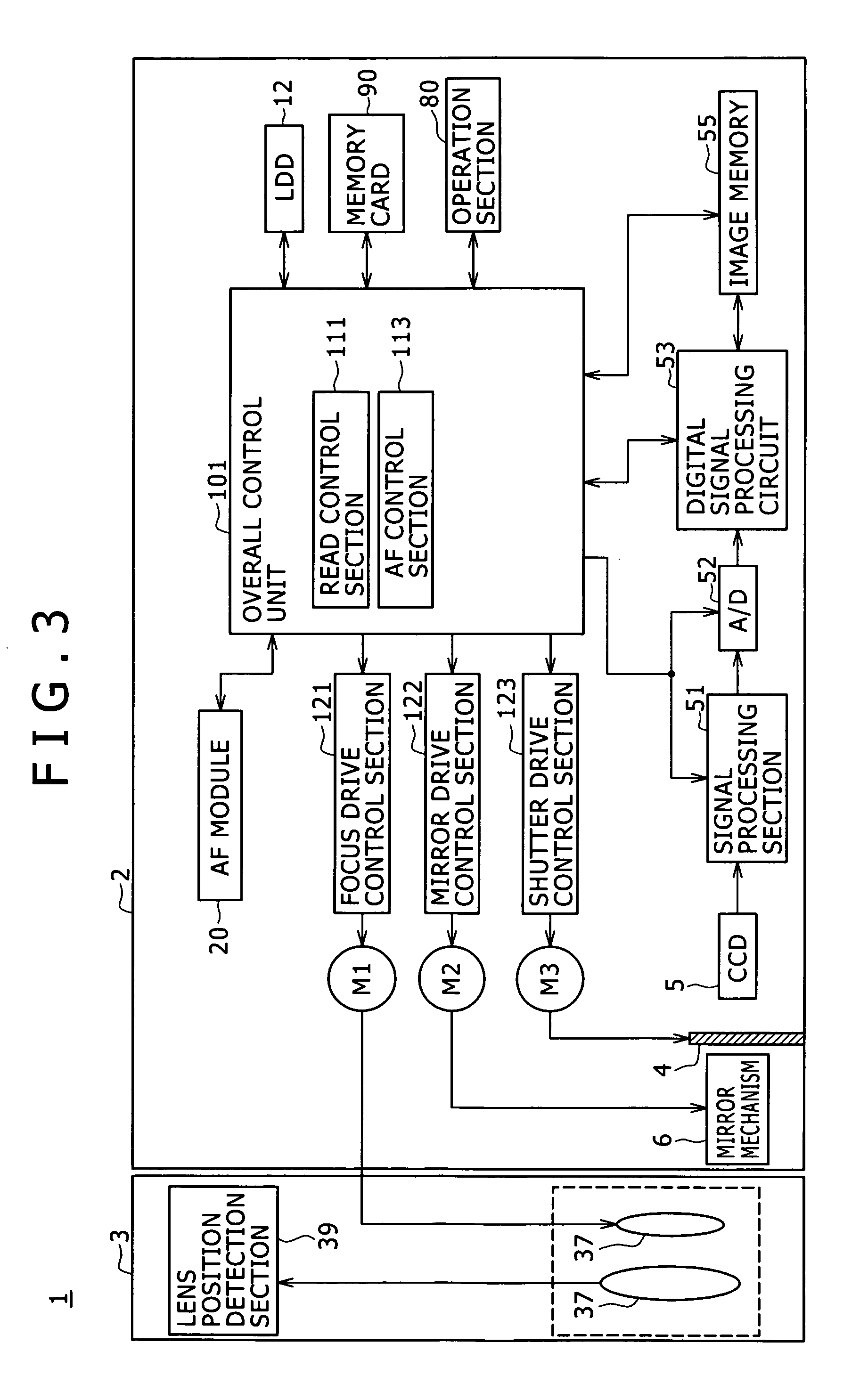Imaging device and focal point detector
a focal point detector and imaging device technology, applied in the direction of printers, instruments, cameras focusing arrangements, etc., can solve the problems of difficult to completely eliminate distortion, difficult to suppress distortion, and difficult to eliminate distortion, so as to reduce the impact of distortion and improve af accuracy
- Summary
- Abstract
- Description
- Claims
- Application Information
AI Technical Summary
Benefits of technology
Problems solved by technology
Method used
Image
Examples
second embodiment
2. Second Embodiment
[0175]In the first embodiment, a case was shown in which the distance measurement sensor group C32 was arranged differently from that in FIG. 29 and in which the distance measurement sensor group C31 was arranged in the same manner as that in FIG. 29. However, the present invention is not limited thereto. For example, the arrangement of the distance measurement sensor group C31 may be changed in accordance with the arrangement of the distance measurement sensor group C32. In the second embodiment, such a modification example will be described.
[0176]In the second embodiment, the arrangements of both the distance measurement sensor groups C31 and C32 are changed. This makes it possible for the distance measurement sensor group C31 to receive the light images from the focus detection regions FR6 to FR10 with more accuracy. As a result, more accurate AF operation can be accomplished based on the subject image in a predetermined direction of the associated focus detec...
third embodiment
3. Third Embodiment
[0196]In the first embodiment, a case was shown in which the paired distance measurement sensors C311 and C321 were arranged at different angles and at different vertical positions. However, the present invention is not limited thereto. For example, the paired distance measurement sensors C311 and C321 may be arranged at the same angle but at different vertical positions. In the third embodiment, such a modification example will be described.
[0197]FIG. 24 is a diagram illustrating part of the sensor chip 227 (227C) according to the third embodiment.
[0198]As illustrated in FIG. 24, in the third embodiment, the distance measurement sensor group C31 is arranged in the same manner as in the first embodiment. On the other hand, the distance measurement sensor group C32 is arranged differently from that in the first embodiment.
[0199]More specifically, as is clear by comparison with FIG. 22, not only the sensors C311 to C315 of the distance measurement sensor group C31 b...
fourth embodiment
4. Fourth Embodiment
[0204]In the first embodiment, a case was shown in which the paired distance measurement sensors C311 and C321 were arranged at different angles and at different vertical positions. However, the present invention is not limited thereto. For example, the paired distance measurement sensors C311 and C321 may be arranged at the same vertical position but at different angles on the sensor arrangement surface. In the fourth embodiment, such a modification example will be described.
[0205]FIG. 25 is a diagram illustrating part of the sensor chip 227 (227D) according to the fourth embodiment.
[0206]As illustrated in FIG. 25, in the fourth embodiment, the distance measurement sensor group C31 is arranged in the same manner as in the first embodiment. On the other hand, the distance measurement sensor group C32 is arranged differently from that in the first embodiment.
[0207]More specifically, the distance measurement sensor C321 is horizontally (direction parallel to the li...
PUM
 Login to View More
Login to View More Abstract
Description
Claims
Application Information
 Login to View More
Login to View More - R&D
- Intellectual Property
- Life Sciences
- Materials
- Tech Scout
- Unparalleled Data Quality
- Higher Quality Content
- 60% Fewer Hallucinations
Browse by: Latest US Patents, China's latest patents, Technical Efficacy Thesaurus, Application Domain, Technology Topic, Popular Technical Reports.
© 2025 PatSnap. All rights reserved.Legal|Privacy policy|Modern Slavery Act Transparency Statement|Sitemap|About US| Contact US: help@patsnap.com



